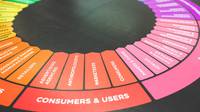
Marketing research involves the gathering and analysis of data using scientific methods, to guide managers in their decision-making and control. In the analysis phase, we need to diagnose what is happening in our markets, and we collect information total market volume and value, market shares, buying patterns, etc. to help us.
The decision-making phase is difficult because we need to choose between courses of action, but precise data/information on the results of marketing action is hard to obtain. Control data/information is needed in order to monitor whether our programs are going according to plan or out of control.
In collecting data, existing sources should be tapped first (secondary data or desk research). There are probably large amount of secondary data available, but they need to be evaluated for up-to-dateness, relevance, accuracy and bias. New data (primary data) can be collected by observation, experiment or from respondents.
Surveys of respondents may be done by mail, telephone or face – to – face interview. Mail surveys are cheap, but usually suffer from response rates which reduce their validity. Telephone interviewing is increasing, and is cheap and effective for many applications. Face – to – face interviewing is the most flexible and usually the most expensive.
Secondary Data
The first thing to do when information is needed is to determine the available data on hand. Such information is somewhat confusingly referred to as “secondary data”, to distinguish it from “primary data” – information collected for the first time. In other countries, this step is usually called desk research.
Secondary data are usually available too. Big companies may have specialized information units to help find what is needed, but in smaller organizations it is often up to the individual manager. In many markets there are large amounts of data published by the government, by trade associations and by commercial market research companies. If in case you have limited information about a market, a good place to start is often the relevant trade association or the editor of the trade journal. Finding one good contact frequently leads on to others.
The problem with secondary data is that they are collected for another purpose, are often not detailed enough for what you want, are out of date, or biased. They should be evaluated carefully before being used.
Primary Data
Once the possibilities of desk research have been exhausted, new data may need to be collected. There are three main sources: experimentation, observation, and respondents.
1. Experimentation: It is an under-used approach, and for certain type of information is the only one which will provide reliable, valid data (the effect of advertising on sales, for example). The difficulties should not be minimized, but there are occasions when quite simple experiments can yield useful results. Where feasible, different prices could be charged in different areas, for example, or different advertisements placed in different publications and the results measured by coupon return. Careful and accurate design and analysis of experiments is vital.
2. Observation: Maybe unstructured, for instance watching how people shop; or structured, for instance using a physical pantry check to see what brands are actually in the home. Watching what people actually do rather that what they say they do in buying and using products, may provide useful clues, and avoids the problems of memory and bias. Observation may also be carried out by mechanical means such as traffic counters or meters attached to television.
3. Respondents: Most marketing research exercises involve obtaining data from respondents by asking questions. This may be done by personal (face – to - face) interview, by mail or by telephone.
1. Personal Interview are the most flexible and overall yield the richest data; they are usually the most expensive, however, and may be subject to interviewer bias.
2. Mail surveys can be cheap, but suffer from limitations as to what can be covered; it is also difficult to control who fills in the questionnaire. Their main drawback is that the response rate is usually low, and the sample obtained may therefore be unrepresentative; it is dangerous to rely on the results of mail survey unless some check has been made on non-respondents.
3. Telephone interviewing has always been used widely in industrial markets, and in recent years has become very much more common in consumer markets. There are two reasons for this: The spread of domestic telephones to the majority of homes, and the development of computer-assisted telephone interviewing (CATI). The latter can control the interview as the questions are asked from the screen, and they are given, allowing very rapid turnaround times for surveys. Sophisticated systems will redial engaged numbers, or even redial a given number when the interview is interrupted and return the interviewer to the place reached in the questionnaire. Telephone interviewing is which can be asked about over the phone. It may of course be used in combination with one or more of the other methods.
Qualitative Research
Marketing research can be either qualitative or quantitative. Qualitative research is often used at the start of a project, when we know little amount about the subject. Individual in-depth interviews or small group discussions are to explore people’s views and attitudes in a fairly unstructured manner, permitting respondents to speak for themselves in their own language/dialect. This is necessary, as it is only too easy to assume that we know how people think about products and what words they use. Qualitative method can produce very substantial data, and should set-aside hypotheses for further study/investigation. The results should not be relied on for decision-making, however, as normally the sample size is small (probably less than 50) and the sample may not be representative enough to represent the entire population.
Quantitative Research
As the term implies. Quantitative research tries to measure things, to put numbers on them. A great deal of research is of this type: how many people buy which brand, how often, where, how, when, and so on. Even research into attitudes and motivation may be included in the study.
Choice of Methods
To determine which method/s should be used for a specific project, it is necessary to use a checklist:
1. Define the problem
Then decide on:
1. What data needed
2. From which source/s
3.How to retrieve
4.How to contact the source
5.How to select the units
6.What analyses to carry out
7.Costs and timing
2. Communicate the result
The first and the last stages are emphasized, because they are the ones in which a manager is most likely to be involved, and because, although they are vital to the success of the project, they are often neglected. Defining the real problem is crucial, and needs careful thought. What might appear at first sight to be the problem may be merely a symptom, or part of a wider problem. Further, marketing research may be able to contribute to some parts of the problem, but not to others. This problem definition stage is therefore the responsibility of the manager who suffers the problem, but demands join discussions with the market research expert.
The detailed questions of research design are really the work of the export, but a manager needs to be able to understand enough to judge whether the design will produce the information needed. Do not be afraid to ask questions, and make sure the expert can explain everything in a way you can understand. The process is the same as buying any outside service, whether the provider is actually outside the company or just in a different department. Good questions to ask are, “Why use that particular method?”, “What other ways could it be done better?”, “What are the advantages and disadvantages of each?”
Sampling
The most technical part of the design, and the most difficult for a non-expert to understand, is the sample. Most non-statisticians do not understand why we can rely on figures from a sample of a few hundred or a few thousand people out of a population of million, and how much reliance we can place on them. The reasons lie in the field of statistical theory, which you will study separately. There are only two things will be presented in this chapter.
1.Provided that the sample is representative and unbiased, we can rely on the results; and,
2.The results will always be only an estimate, subjects to sampling error.
Random Samples
The best type of sample design (and, strictly speaking, the only one on which statistical test may be used) is the random or probability sample. “Random” in this sense has a technical meaning, that every member of the population being sampled has a known probability (usually, though not always, equal) of being selected. For technical and practical reasons, a random sample is expensive for personal interview surveys, and is used only when a very high-quality sample is needed; the same consideration do not necessarily apply to mail and telephone surveys, so random sampling methods can be used there more easily.
Quota Samples
Non-random samples are called quota (or judgment, or purposive) samples, frequently we know enough about the population to be sampled- housewives, or the general population, or firms in a particular industry – to be able to set quotas would be set for age within sex, perhaps with social class as well. Thus each interviewer would have a daily quota of so many males and females in each age-group; other controls might be concerned with buying patterns, for example (so many product buyers and non-buyers). When all the quotas are added together, the result reflects the target population. The obvious problem with quota samples is that people who are difficult to find or to interview – working women, people who travel a lot, teenagers, old people, shall be under-represented. This may or may not matter, depending on the objectives of the survey. The dangers of bias must be weighed against the ease and cheapness of the method.
Generating conclusions and making recommendation
After the research design had been formulated and followed in collecting, coding, tabulating, and analysing secondary and primary data, a report shall be prepared that will summarize study findings, conclusions and recommendations.
The “recommendation” step is the most of the entire marketing research process because recommendations are what decision makers rely on. For example, a wrong decision to enter a market, based on faulty researcher and recommendations from a given study, may cost company A millions of pesos.
Conclusions and recommendations are generally presented in written form to decision makers. Since these presentations are often communicated to both headquarters and local managers, all interests or parties should be represented. Study results should be presented clearly, where information of limited general interest can be found. Be sure presentations demonstrate how research result relate to original research objectives and are consistent writer overall corporate strategy.
Finally, the marketing research process comes fuel circle as findings, conclusions, and recommendations are programmed into decision support systems are used in the subsequent creation, implementation, and control of strategic marketing plans.


















